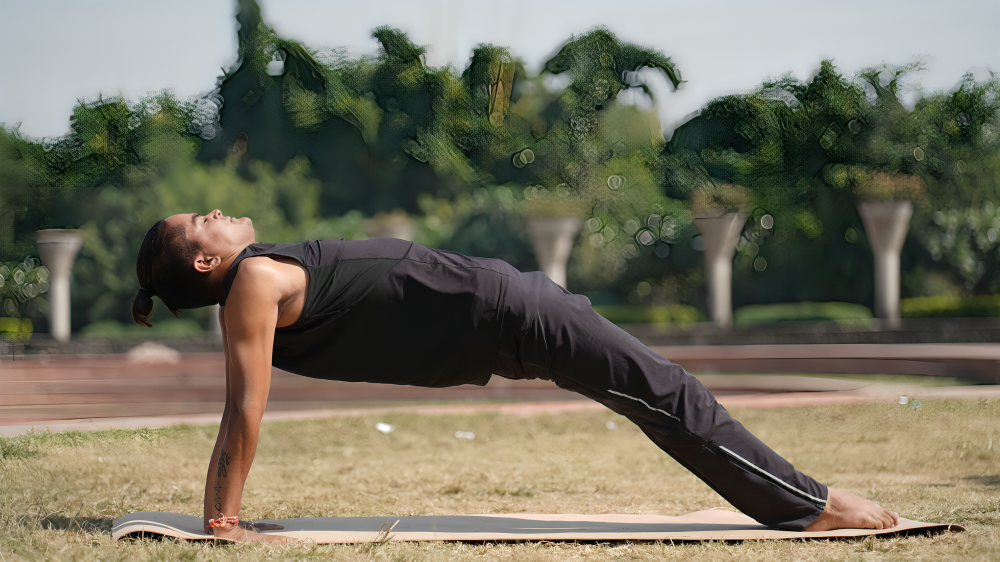
What Is Parvottanasana?
Parvottanasana, commonly referred to as Intense Side Stretch Pose, is a standing yoga pose that involves a deep forward bend while keeping your legs straight and aligned. The Sanskrit name “Parvottanasana” comes from “Parva” (side) and “Uttana” (intense stretch), which perfectly describes the deep stretch this pose offers, especially along the sides of your body.
How to Do Parvottanasana
Start in Mountain Pose (Tadasana): Stand tall with your feet together, arms relaxed by your sides, and shoulders back. Focus on grounding yourself and finding balance.
Step Back with One Foot: Take a step back with your left foot, about 3-4 feet behind your right foot. Keep your feet aligned with your hips, and make sure your toes are pointing forward.
Square Your Hips: Rotate your hips so they’re facing forward, aligning them with the front of your mat. This may take some adjustment, so don’t rush it.
Inhale and Extend Your Arms: On an inhale, reach your arms up overhead, stretching through your fingertips. Feel the length in your spine.
Exhale and Fold Forward: As you exhale, hinge at your hips and slowly lower your torso toward your front leg. Keep your spine long and your back flat. Your hands can either rest on your shin, the floor, or blocks for support.
Hold the Pose: Once you’ve found your deepest stretch, hold the position for 5-10 breaths. Keep your gaze toward your front leg and continue to breathe deeply.
Return to Standing: To come out of the pose, inhale and slowly lift your torso back up. Step your back foot forward to return to Mountain Pose.
Repeat on the Other Side: Switch legs and repeat the pose on the other side to ensure balance in your practice.
Benefits of Parvottanasana
Improves Flexibility: This pose gives a deep stretch to your hamstrings, calves, and spine, helping to increase your overall flexibility.
Enhances Balance and Stability: By practicing Parvottanasana, you strengthen your legs and core, which improves your balance and stability in other yoga poses and daily activities.
Strengthens and Tones Muscles: The intensity of the stretch in this pose works on toning and strengthening the muscles in your legs, hips, and lower back.
Promotes Better Posture: The alignment required in Parvottanasana encourages proper posture by engaging and lengthening the spine.
Calms the Mind: Like many forward bends, Parvottanasana has a calming effect on the mind, reducing stress and anxiety. It’s a great way to center yourself during a busy day.
Boosts Circulation: The forward fold in this pose helps increase blood flow to your head, which can be refreshing and revitalizing.
It’s here Paschimottanasana how to do it and what are the benefits
FAQs
Q: Can I do Parvottanasana if I have tight hamstrings?
A: Absolutely! You can modify the pose by bending your front knee or using yoga blocks to make the pose more accessible.
Q: How often should I practice Parvottanasana?
A: You can include Parvottanasana in your daily yoga practice or whenever you need a deep stretch. Just be sure to listen to your body and avoid overdoing it.
Q: Can Parvottanasana help with lower back pain?
A: Yes, it can. This pose helps stretch and strengthen the muscles around the lower back, which can alleviate tension and discomfort.

